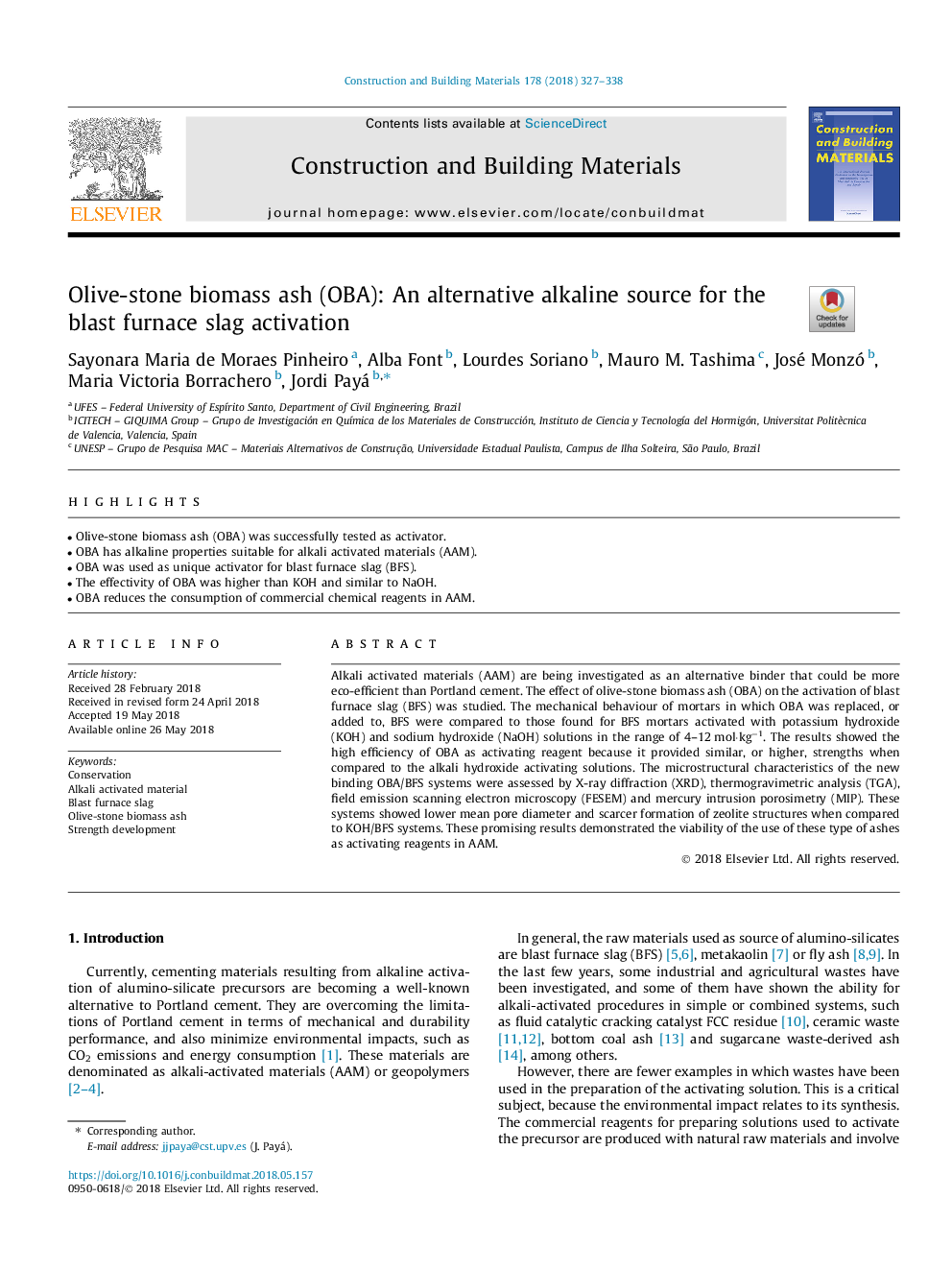| Article ID | Journal | Published Year | Pages | File Type |
|---|---|---|---|---|
| 6712850 | Construction and Building Materials | 2018 | 12 Pages |
Abstract
Alkali activated materials (AAM) are being investigated as an alternative binder that could be more eco-efficient than Portland cement. The effect of olive-stone biomass ash (OBA) on the activation of blast furnace slag (BFS) was studied. The mechanical behaviour of mortars in which OBA was replaced, or added to, BFS were compared to those found for BFS mortars activated with potassium hydroxide (KOH) and sodium hydroxide (NaOH) solutions in the range of 4-12â¯mol·kgâ1. The results showed the high efficiency of OBA as activating reagent because it provided similar, or higher, strengths when compared to the alkali hydroxide activating solutions. The microstructural characteristics of the new binding OBA/BFS systems were assessed by X-ray diffraction (XRD), thermogravimetric analysis (TGA), field emission scanning electron microscopy (FESEM) and mercury intrusion porosimetry (MIP). These systems showed lower mean pore diameter and scarcer formation of zeolite structures when compared to KOH/BFS systems. These promising results demonstrated the viability of the use of these type of ashes as activating reagents in AAM.
Related Topics
Physical Sciences and Engineering
Engineering
Civil and Structural Engineering
Authors
Sayonara Maria de Moraes Pinheiro, Alba Font, Lourdes Soriano, Mauro M. Tashima, José Monzó, Maria Victoria Borrachero, Jordi Payá,
